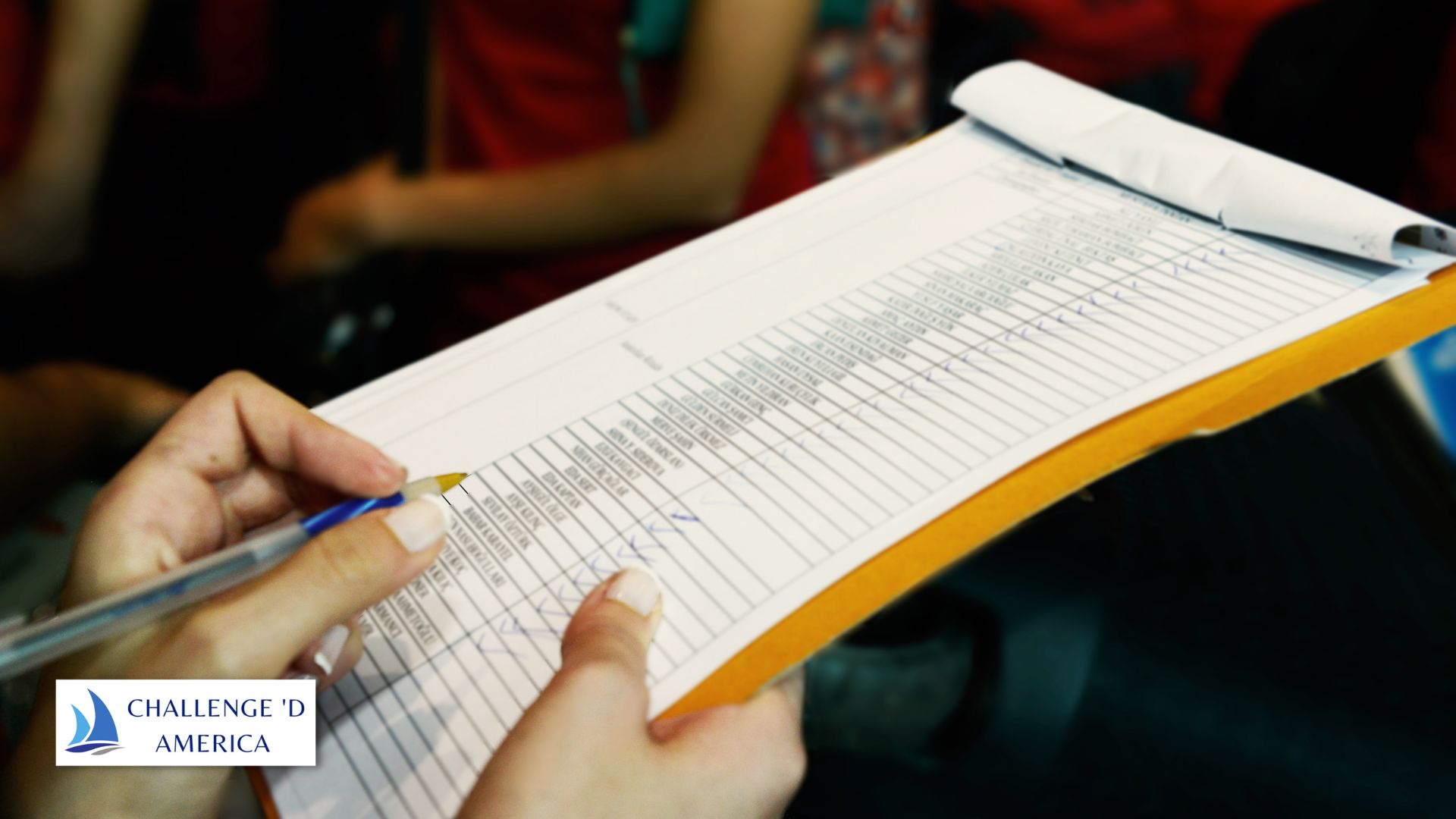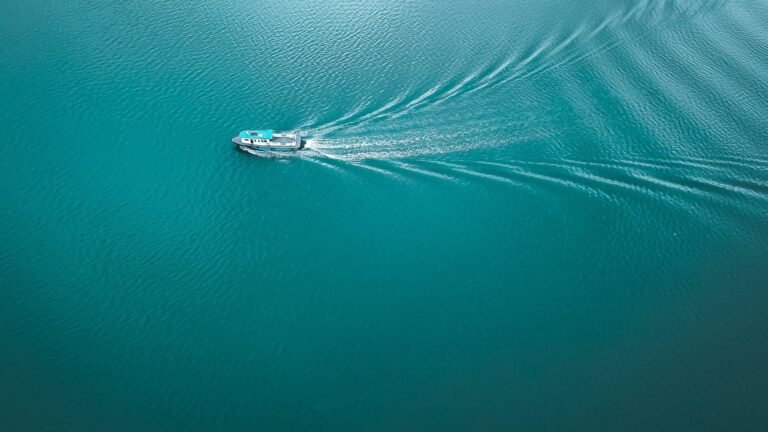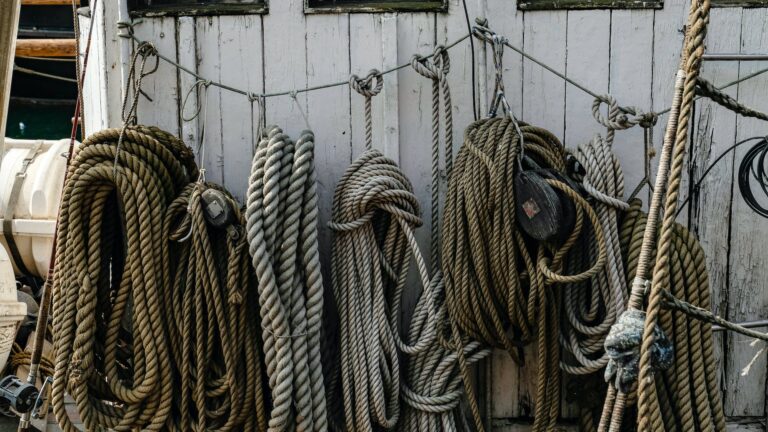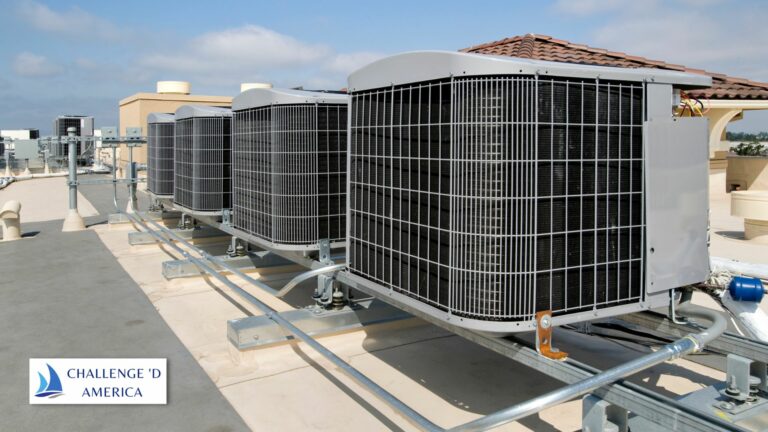Boating Equipment Checklist
I’m here to talk to you about the essential items and equipment you need to check before heading out on the water. Whether you’re a seasoned sailor or a beginner, it’s important to make sure you have the right gear and equipment for your boating trip.
To help you out, we’ve compiled a comprehensive boating equipment checklist that covers all the essential items you need for a safe and successful trip. So grab your pen and paper and let’s get started!
Pre-Departure Chceklist
I know that you can never be too prepared when it comes to boating. Before heading out, it’s important to double-check your equipment and make sure everything is in proper working order. To make sure you’re ready, here’s a pre-departure checklist to help you get organized.
Sound-Producing Devices
Nothing is more important when sailing than being able to communicate with other vessels and shore-side personnel. That’s why I always make sure to check my sound-producing devices before setting off on a sailing adventure.
This includes my horn, bell, and whistle. I always check to make sure these devices are in working order and that I have plenty of air canisters to sound them.
Additionally, I also make sure I have a handheld VHF radio and a good quality loudhailer. Lastly, I make sure I have enough spare batteries to power all of my sound-producing devices.
By making sure that my sound-producing devices are in good working order and that I have plenty of spare batteries, I can be confident that I have the tools I need to communicate with others while out on the water.
Lights
When out on the water, it’s important to make sure your boat is visible to others. The International Regulations for Preventing Collisions at Sea require that sailing vessels carry navigation lights from sunset to sunrise and in restricted visibility.
All boats, regardless of size or type, should carry some kind of navigational light for safety.
Your navigation lights should be visible for at least two miles, and you should check them regularly to ensure they’re in good working order.
You should also carry a handheld spotlight in case you need to signal or identify yourself in an emergency situation. Flashlights are essential for nighttime navigation and for when you need to do work below deck.
Whether you’re in the open ocean or on a lake, it’s always a good idea to make sure your navigation lights are functioning properly and that you have the necessary tools to signal your presence.
Distress Signals
No matter how experienced a sailor you are, it is still important to be prepared for any emergency situation. Before you embark on your sailing voyage, make sure to stock up on a few important distress signals.
Life jackets, flares, and a whistle are all essential items to have on board. If you ever find yourself in a dire situation, you can use these items to alert passing vessels or rescue services.
Additionally, be sure to install a VHF radio on board your vessel in order to communicate with other boaters and the Coast Guard.
Having the right distress signals in place before you set sail can help ensure that you are prepared for any potential emergency.
Docking And Anchoring
As a sailor, it’s important to be prepared for docking and anchoring. Before heading out on the water, here’s what to check:
- Inspect your dock lines and anchor line to make sure they are in good condition and free of chafing.
- Make sure your anchor is the right size, weight, and type for the conditions you’ll be facing.
- Review your docking and anchoring techniques to make sure you’re comfortable in any situation.
- Have a plan for backing up your anchor if it gets stuck.
- Make sure there is enough scope out for your anchor, as well as enough space between your boat and the dock.
These are just a few of the steps you can take to make sure your docking and anchoring experience is safe and successful. With a little preparation and practice, you’ll be ready to set sail with confidence.
Documentation
As a sailor, it is important to stay organized and have all the necessary documents ready before any sailing trip. Your documents should include a valid passport, visas (if required), cruise tickets, and travel insurance.
Make sure to contact your travel agent well in advance of your trip to ensure all the necessary paperwork is complete.
It is also wise to take photocopies of all your documents and store them somewhere safe, just in case of any unfortunate incidents. Furthermore, it is important to check the expiration dates of any documents and renew them if necessary.
Lastly, make sure to take a valid form of identification, such as a driver’s license, with you on your trip. This can be used for a variety of purposes, including hotel check-ins, car rentals, and more.
Having all the necessary documents ready and organized before your trip can help you avoid any last minute hassles and keep your sailing trip running smoothly.
Fire Extinguishers
As a sailor, it’s important to make sure that your boat has the right firefighting equipment on board. Fire extinguishers are an essential part of any boat’s emergency preparedness.
Before you set sail, make sure to check that your boat is stocked with the appropriate number and types of fire extinguishers, and that they are all in good working order.
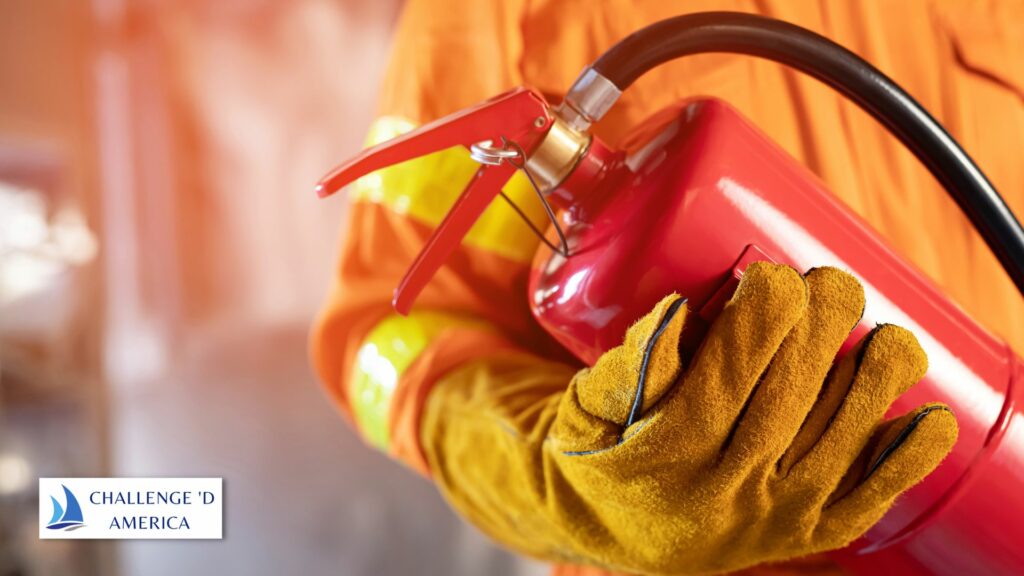
It’s also important to have a plan for using the fire extinguishers if needed. Familiarize yourself with the type of fire extinguisher you have on board and the instructions for using it. Make sure that everyone on board knows the location of the fire extinguishers and how to use them in an emergency.
Finally, check the expiration date on your fire extinguishers and make sure that they’re up to date. Fire extinguishers can become less effective over time, so it’s important to replace them before they expire. Keeping fire extinguishers updated is an important part of your pre-departure checklist.
Tools And Spares
As a sailor, nothing is more important than having the necessary tools and spares on hand before departure. It’s important to make sure you have all the essentials like a basic tool kit, spare parts, and any specialty tools needed for your particular boat. A few suggestions include:
- Basic tool kit with a variety of wrenches, screwdrivers, and pliers.
- Spare parts like fuel filters, oil filters, and impellers.
- Spare hoses, clamps, and belts.
- Specialty tools such as a puller or a bearing puller.
- Electrical components such as fuses, connectors, and spare wire.
Before you set sail, make sure you have all the tools and spares you need for a successful voyage. Having the proper tools and spares on hand can make all the difference in the world when it comes to making repairs and keeping your boat running smoothly.
Emergency Boat Operation
As a skipper, it is essential to be prepared for any emergency that may occur while out on the water. To ensure the safety of your crew, you should take the time to familiarize yourself with the boat’s emergency operation procedures prior to departure.
This includes knowing how to start the boat’s emergency motor, how to deploy life rafts, and how to activate the boat’s emergency radio beacon.
Additionally, make sure that you have the appropriate safety gear on board to handle any unexpected situations, such as fires, flooding, and man-overboard scenarios.
By taking the time to go through these emergency procedures ahead of time, you’ll be better prepared to handle any potential emergencies that may arise while out on the water.
Fuel And Oil
For any sailing voyage, it is essential to have enough fuel and oil on board. Before setting sail, make sure to check the fuel and oil levels. Depending on the type of engine, the oil level should be between the minimum and maximum marks.
Make sure to also check that the fuel tank is filled, and that the fuel is clean and free of water contamination. If you use a diesel engine, check the fuel filter and exhaust systems for any blockages.
If any of these systems are compromised, be sure to repair or replace them before setting sail. Additionally, keep a few spare fuel and oil filters onboard in case of emergency. Doing so will help ensure that your engine stays in good condition throughout your voyage.
Ventilation
Before embarking on a long sailing voyage, it’s important to make sure your vessel’s ventilation system is functioning properly.
Poor ventilation can lead to uncomfortable temperatures and high levels of humidity, which can cause mildew and other growths to form on the interior of the boat. It can also make it difficult to keep the cabin area clean and comfortable.
To ensure proper ventilation, inspect all of your boat’s fans and ventilation ports. Make sure the fans are operating properly and that the vents are not blocked or clogged with debris.
It’s also a good idea to open all the hatches, ports, and doors to make sure air can move freely through the boat.
If you have an air conditioning system, make sure it is in good working order. Check the filters and clean them if necessary. Also, make sure all of the hoses and ducts are free from obstructions.
Finally, make sure that your boat has a steady supply of outside air. If you are sailing in a secluded area, you may need to consider supplementing your ventilation system with a generator. This will ensure that your boat has a steady supply of fresh air, even if you are far from shore.
Battery Care
As a sailor, it’s important to make sure your batteries are in proper working order before any voyage. Before you set sail, check the battery’s water levels and check the cables and terminals for corrosion.
If the water levels are low, you will need to fill them up with distilled water. If you notice any corrosion on the terminals, you should clean them with a brush and some baking soda and water. Also, make sure the battery is fully charged before you leave.
If you have a battery charging system, it’s recommended that you check the system to make sure it’s functioning properly.
Finally, if you’re going on a long voyage, consider bringing a spare battery in case the original one fails or runs out of power. Taking care of your batteries before you set sail will ensure you have a successful and safe voyage.
Weather Forecast
No sailor should go out to sea without first checking the weather forecast. This is an essential part of the pre-departure checklist. Make sure to check both the short-term and longer-term forecasts, as well as any local advisories.
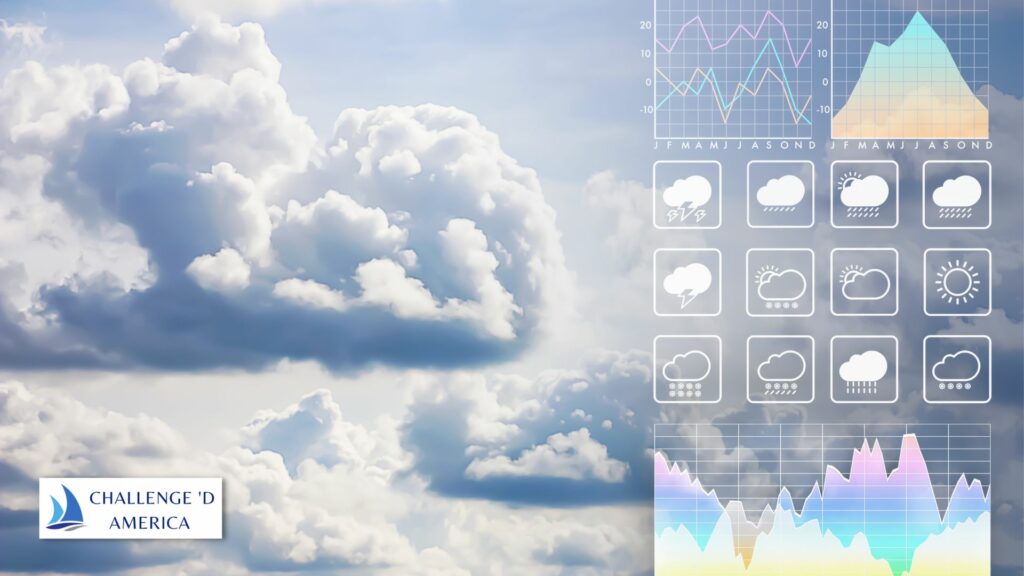
Pay close attention to wind and precipitation forecasts, as well as any warnings for severe weather.
It’s also a good idea to check the marine forecast for any warnings about storms, high winds, or other dangerous conditions. Knowing the forecast ahead of time can help you plan your departure and sailing route accordingly.
Bilges
As a sailor, it’s important to check the bilges of your boat before departing on a voyage. Bilges are the lowest section of the hull of a boat and are a key area to inspect for water seepage and debris.
Start by checking the bilges for any signs of water, or any debris that might have found its way in. Ensure that your bilge pumps are in proper working order and that the hoses are free of clogs or any other blockages.
If the bilges are wet, and you can’t identify the source, it’s important to investigate further and fix the issue before departing.
If your boat is equipped with a bilge alarm, make sure it’s in working order and the bilge pump is activated. If the bilge alarm fails to sound, it’s a good indication that some type of maintenance is needed.
Finally, it’s important to keep the bilges clean and free of oil and other contaminants. This can be done by using a bilge cleaner and a brush to remove any buildup. Keeping your bilges clean and dry will help to ensure that your boat is safe and seaworthy before setting sail.
Float Plan
As a sailor, it’s important to let others know your plans before you set sail. That’s why a float plan is an essential part of any pre-departure checklist.
A float plan is a document that you can give to family, friends, or the Coast Guard that outlines your sailing plans for a particular voyage.
It should include details such as the date and time of departure, the route you plan to take, the number of crew aboard, and the expected time of arrival at your destination.
It’s also important to include information about the boat itself, such as the name and type of vessel, its size and color, the registration number, and emergency contact information.
Having a float plan in hand before you set off on your voyage can help make sure that others know your plans and can contact the proper authorities in case of an emergency. It’s a small step that can help ensure your safety and the safety of your crew.
5 Must-Have Safety Equipment For Your Boat
I know first-hand the importance of having the right safety equipment on board your vessel. Whether you are a novice or an experienced sailor, having the right safety equipment is essential to ensure a safe voyage.
In this article, I’m going to discuss five must-have safety equipment items that you should always have on your boat. Having these items will help ensure that you and your crew stay safe while out on the water. So let’s get started!”
1. Life Jackets And Wearable Personal Flotation Devices (Pfds)
When it comes to safety equipment for your boat, life jackets and personal flotation devices (PFDs) should be at the top of your list.
Life jackets and PFDs are designed to keep you afloat if you fall into the water. Wearing a life jacket or PFD can be the difference between life and death in an emergency situation.
The US Coast Guard requires that all boats have a minimum of one wearable Type I, II, III, or V PFD for each passenger on board. Additionally, if you have young children on board, they must wear a Type I or Type II life jacket at all times.
When choosing a life jacket or PFD for yourself, make sure to select one that is comfortable and fits correctly. Make sure that the straps are adjustable and that you can move around comfortably in the PFD.
Additionally, make sure to check the USCG label for the “approved” designation, which indicates that the PFD is approved for use by the US Coast Guard.
By ensuring that you and your passengers have the right life jackets and PFDs, you can rest assured that everyone on board is safe and secure.
2. Throwable Flotation Devices
As a sailor, having throwable flotation devices on board your boat is a must-have. Not only can these devices be used to help a person who has gone overboard, but they can also be used to help keep the boat from sinking or from taking on too much water in an emergency.
Throwable flotation devices, like life rings or cushions, should be stored in an accessible area that can be quickly reached in case of an emergency.
Make sure you have enough life rings for each person on board and that any throwable flotation device is in good condition and free of tears.
Be sure to check the expiration dates of the life ring and replace them if necessary. Having the right type of throwable flotation devices on board your boat can be the difference between life and death in an emergency.
3. Fire Extinguishers
Boats have their own unique fire safety challenges. A fire on a boat is exceptionally dangerous due to its enclosed environment. That’s why having the proper fire extinguishers on board is an absolute must.
The type and size of fire extinguisher you need depends on the size of your boat. Generally speaking, the larger your boat, the more fire extinguishers you’ll need.
The U.S. Coast Guard requires that boats carry a minimum of one B-1 type fire extinguisher, but ideally you should have two or more.
Be sure to inspect your fire extinguishers regularly and replace any that are out of date. You should also practice using them so that you know how to properly discharge them in the event of an emergency.
As a boater, you can never be too prepared when it comes to fire safety. By investing in the right fire extinguishers, you’ll be giving yourself the best chance of containing a fire before it can do too much damage.
4. Visual Signaling Devices
Visual signaling devices are an important part of your boat’s safety equipment. These include flare guns, signal mirrors, and searchlights.
Flare guns are the most important of the three, and should be used to signal to other boats or land that you need help, or to indicate your location in the dark.
Signal mirrors are a great way to attract attention when you’re in distress. Searchlights are also important if you need to locate another boat in the dark. If you’re going out on the water, make sure you have the right visual signaling equipment to keep you safe.
5. Sound Signaling Devices
When it comes to safety on the water, sound signaling devices can be an important part of your boat’s safety equipment. Having a whistle, bell, or horn on board can help you communicate with other vessels in the area, as well as alert them to your presence.
It’s also crucial to have a fog horn or signal flares in the event of a distress situation. Having the right sound signaling devices on board can be the difference between a relaxing sail and a dangerous situation. Make sure your boat has the necessary sound signaling devices to ensure a safe and enjoyable experience on the water.
What Equipment Am I Required To Have On My Boat?
As a skipper, it is essential to ensure your boat is equipped with all the necessary safety equipment before setting sail. In the United States, the Coast Guard requires all vessels to carry certain items, depending on the size, occupancy, and operating area of your boat.
For example, vessels under 16 feet must carry (at a minimum) a personal flotation device (PFD) for each person on board, a sound-producing device (like a whistle), and a fire extinguisher. Vessels 16 to 26 feet must also carry a visual distress signal device, such as flares, and a compass.
Vessels 26 feet and larger must carry a second fire extinguisher, and a VHF Marine Radio. In addition, the Coast Guard requires all vessels to have a properly disposed of marine sanitation device if they have a toilet.
These are just the basic requirements, and more items may be necessary depending on the waters you are sailing and the weather conditions you are likely to encounter. A full list of required equipment can be found on the Coast Guard website.
When preparing for a voyage, remember to check for the essential items and make sure they are all in good working order. A well-equipped boat is the best way to ensure a safe and enjoyable sailing experience.
What Is The Pre Departure Checklist For Boating?
As a seasoned sailor, I know how important it is to ensure that your vessel is well maintained and that you are properly prepared for any situation.
That is why I always recommend creating a pre-departure checklist for boating. This checklist should include all of the necessary supplies and equipment you need for a successful and safe voyage.
First and foremost, make sure that you check the weather conditions prior to departure. This will help you plan accordingly and prepare for any unexpected changes. Additionally, you should also check your navigation systems and make sure that all of your charts and other navigational tools are up to date.
Next, you should inspect your vessel and make sure that all of the essential safety equipment is in proper working order. This includes life jackets, flares, and other emergency supplies. Additionally, make sure that your vessel has all the necessary supplies such as fuel, oil, and water.
Finally, make sure to double check that your crew is knowledgeable and prepared for the voyage. Every member of the crew should be aware of their responsibilities and be ready to take action if an emergency arises.
By following these simple steps, you can ensure that you and your crew are ready for a safe and successful voyage.
What Is Basic Maintenance For A Boat?
As a sailor, it’s important to understand the basics of boat maintenance to ensure your vessel is in peak condition. Basic maintenance includes regular inspections of the hull, deck, and interior. It’s important to inspect the hull for wear and tear, checking for any cracks or damage.
The deck should be checked for wear and tear, and all hardware checked to make sure it is in good working order. Finally, the interior should be checked for signs of mold or mildew, as well as any other signs of deterioration.
In addition to regular inspections, boat maintenance also includes regular cleaning. Cleaning the deck and interior helps keep the boat in good condition, and also helps to prevent the growth of mold and mildew.
It’s important to clean the boat’s exterior with a mild soap and water solution. The boat should also be waxed regularly to protect it from UV damage.
Finally, basic maintenance includes regular maintenance and repairs. This includes changing the oil, replacing spark plugs, and checking the engine, as well as replacing any worn out parts.
It’s important to keep up with regular maintenance and repairs to ensure your boat is running at peak performance.
By following a regular maintenance schedule, you can ensure your boat is in top condition and ready for your sailing adventures.
How Do You Start A Boat Checklist?
When it comes to boating, safety should always be a top priority. That’s why it’s important to create a boat checklist to ensure you’re prepared for any situation.
A boat checklist should include all the necessary safety items you’ll need to be prepared for any voyage, as well as any other items you may need for a particular trip.
To start, begin by making a list of all the necessary items you’ll need on board, such as life jackets, flares, and other safety gear.
Then, look at the items you’ll need for the specific type of boating you’ll be doing, such as fishing gear, navigation tools, and any other gear that may be necessary. Finally, consider any other items you may need for the trip, such as food, drinks, and entertainment.
Once you’ve made a comprehensive list, it’s time to begin packing. To make your packing easier, break down the list into “must-have” items and “nice to have” items.
This will help you prioritize what needs to be taken and what can be left behind. As you pack, make sure to double check your list and make sure everything is accounted for.
By taking the time to create a comprehensive boat checklist and thoroughly packing, you can ensure that your voyage will be safe and enjoyable.
What Equipment Is Required On All Boats Regardless Of Size?
No matter what size boat you have, there are certain pieces of essential boating equipment that you should always carry onboard. The most important of these is a personal flotation device (PFD) for each person on board.
In addition, all boats should be equipped with a fire extinguisher, a sound-producing device (such as a whistle or bell), a navigation light, and a visual distress signal.
Other items that are important to have on any size boat include a flashlight, a first-aid kit, spare oars or paddles, a spare anchor, and a bailing device. Having these items on board will ensure that you are prepared for any eventuality.
Conclusion On Boating Equipment Checklist
Having the right equipment is essential for a safe and successful voyage. This boating equipment checklist has outlined all the items you should have on board before heading out.
From boating safety gear to navigation and communication equipment, it’s important to have the right gear for your boat and for the conditions.
Make sure you check the condition of all your equipment regularly and always carry and use the items on the checklist. Good luck and happy sailing!

